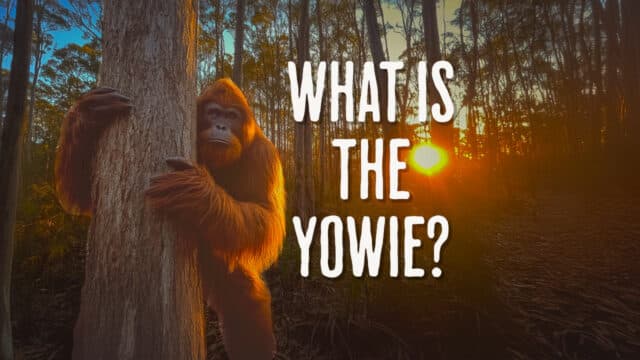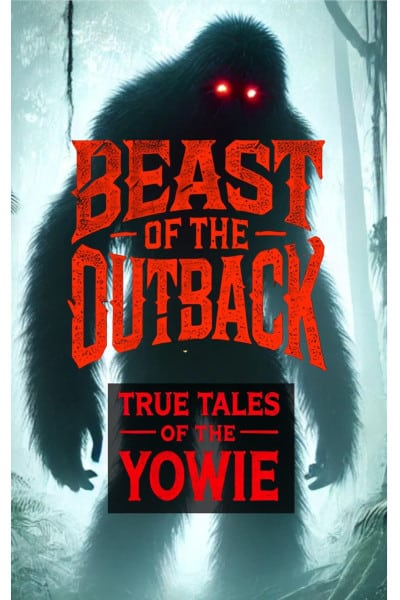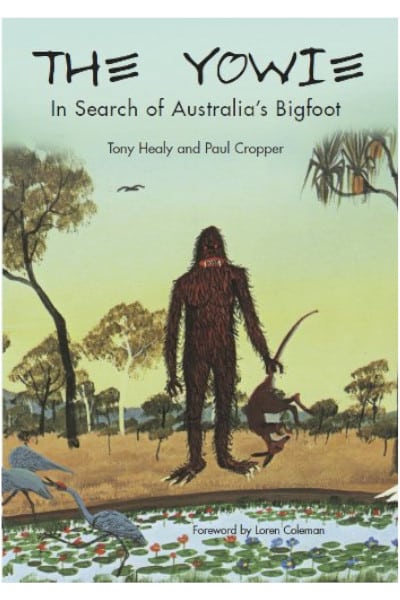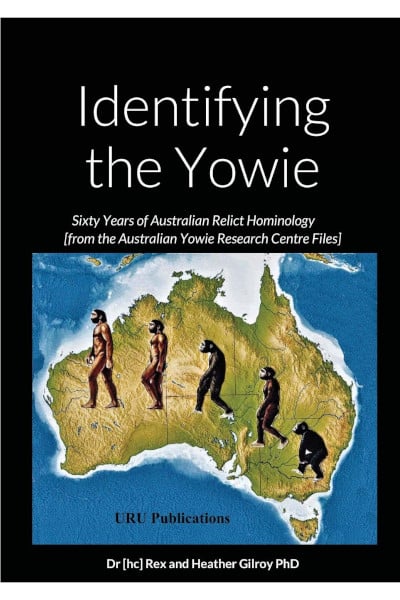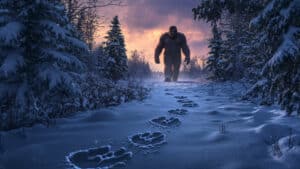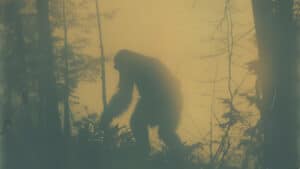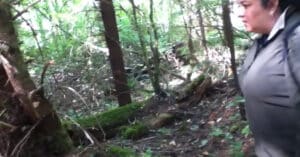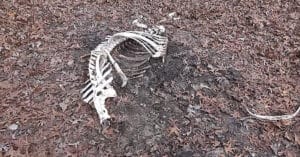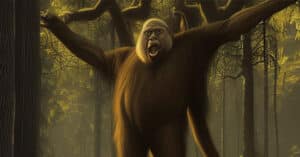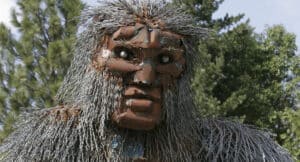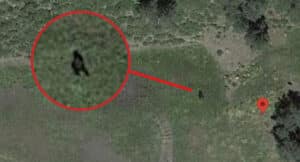For ages, people have reported a hairy beast lurking in Australia’s wildest corners. Aboriginal communities know it as the Yowie—a shadowy figure that stalks the night. Some even call it Australia’s Bigfoot.
Tales of this creature stir both chills and wonder across the Outback. Does it truly roam the bush, watching from the trees? ParaRational.com is diving deep into the mystery.
We’ll explore the Yowie’s legend, chilling encounters, and what science has to say. Grab a flashlight and come along. The truth might be out there.
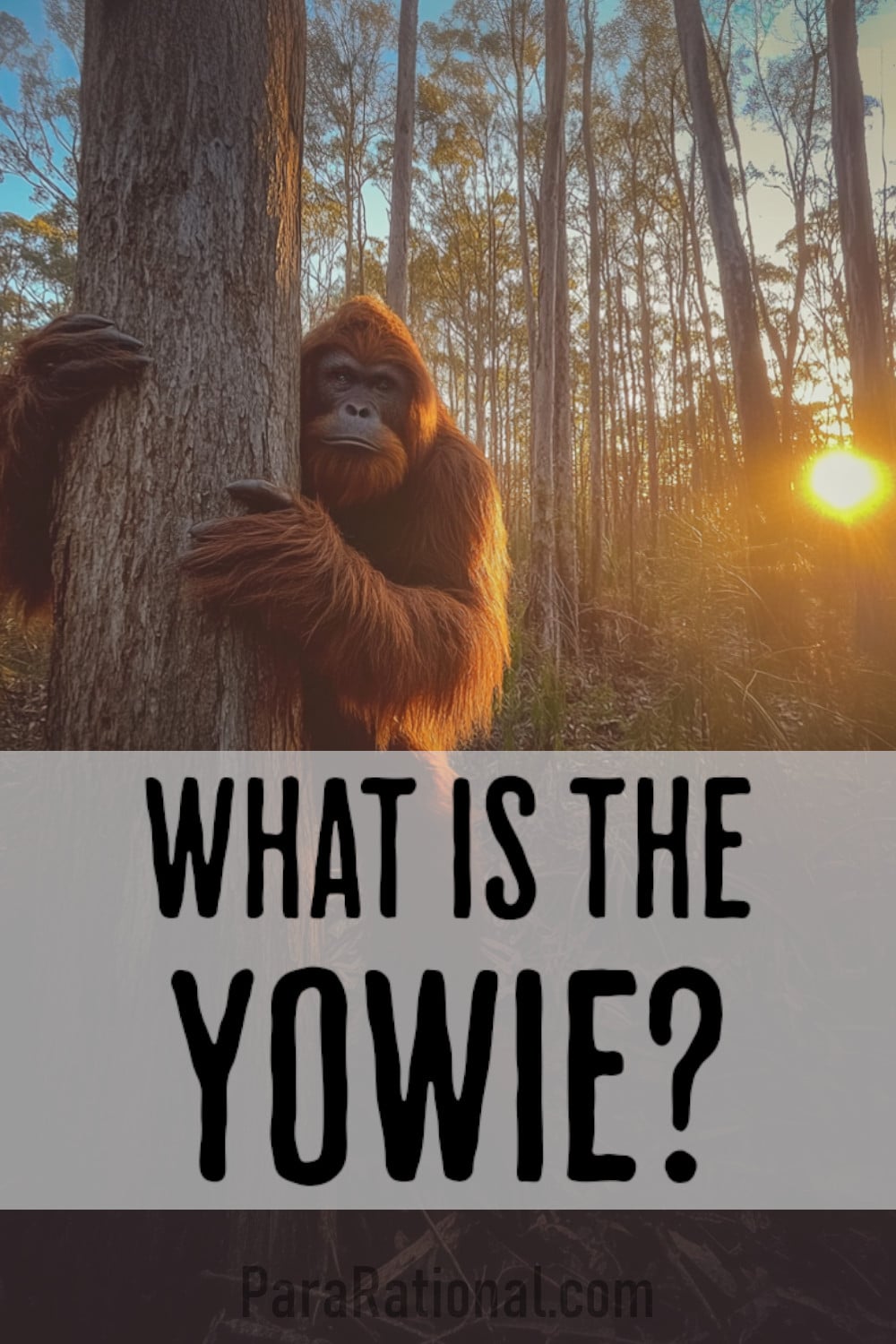
What is A Yowie?
A Yowie is an unverified creature from Australian folklore, a hairy, ape-like giant roaming the bush. Aboriginal tales name it Quinkin or Jurrawarra. Some call it shy, others say it’s fierce. Only personal accounts and circumstantial evidence exist, making Australia’s Bigfoot as hard to prove as a real creature.
What do Yowie Look Like?
People describe a massive creature, reported as standing between six to twelve feet tall, but with most reports putting them in the 7-9 foot range.
Typical descriptions say that it is covered in thick, matted hair, that is dark brown or black, but some report reddish fur. In Queensland, witnesses note a rusty tint shining under moonlight.
Much like their North American counterparts, Yowies are said to have broad, heavy shoulders and a flat face, like an ape. Some claim small, deep-set eyes that gleam at night.
Tracks that have been found show giant feet, up to twenty inches long. A few tales mention a strong, musky smell trailing it, also closely matching the Bigfoot of the Americas, which makes me wonder just how long this species has been around.
Where Do Yowie Live?
Yowie sightings pop up in Australia’s wildest, most rugged places. People report them in thick forests, steep mountains, and remote Outback valleys. Most tales come from New South Wales and Queensland.
The Blue Mountains near Sydney are a hotspot, with dense bush perfect for hiding. Queensland’s Gold Coast hinterland hears strange howls at night. Considering how wild and inhospitable those areas are to humans, it seems like a great place for a creature like the Yowie to hide.
Some sources say Yowies stick to caves or deep gullies, avoiding human eyes. Tracks appear near rivers, but proof stays scarce, and I’ve always been dubious about Bigfoot (or Yowies) taking up any sort of permanent residence in caves.
Are Yowie Dangerous?
Do Yowies pose a threat, or are they just shy giants? Most stories paint them as elusive, slipping away from hikers. Yet, some tales give me pause.
A few folks claim Yowies growl fiercely, chasing dogs or lunging at campers. In Queensland, one report mentions a Yowie hurling rocks at a car. That sounds scary, but where’s the solid proof?
I lean toward thinking they’re harmless, if they even exist. No one’s been hurt, as far as records show. Still, those angry stories make you wonder, and I would be warry of running into a young male Yowie that was out trying to establish a territory of his own.
Origins and Cultural Significance Of The Yowie
Yowie stories run deep in Australia’s ancient Aboriginal past. Tribes like the Kuku Yalanji in Queensland speak of hairy giants roaming wild lands. They call them Quinkin, Jurrawarra, or Joogabinna, names changing by region.
These aren’t just scary tales told at night. Some Aboriginal groups believe Yowies were early inhabitants, living before humans claimed the bush. That thought lingers, though I wonder about proof.
Githabul people in New South Wales say Yowies protect sacred mountains. Elders describe them as tall, fur-covered, strong enough to toss boulders. Such vivid stories stir my curiosity.
Kamilaroi lore ties Yowies to nighttime spirits, eerie and untouchable. Each tribe’s take feels unique, which fascinates me. Still, no fossils or bones support these claims.
I respect the power in these legends. They paint Yowies as part of nature, not mere monsters. Yet, I question how much is truth.
European Influences?
When Europeans arrived, Yowie tales took new twists. Settlers in the 1700s heard Aboriginal stories and added their own spin. Some called Yowies “Yahoos,” which makes me raise an eyebrow.
That name might come from Jonathan Swift’s book, Gulliver’s Travels, written in 1726. It describes hairy, wild creatures called Yahoos, sounding a bit like Yowies. Could settlers have borrowed the term?
Others argue “Yahoo” was already an Aboriginal word for strange beings. Early reports from Sydney in 1795 mention “hairy men” in the bush. Hard to say who influenced who.
I lean toward thinking Aboriginal tales came first. European ideas likely muddied the waters over time. Still, the mix of stories keeps me wondering.
Cultural Significance Today
Yowie legends still hold weight in Australia’s heart. Aboriginal communities honor them as ties to ancient wisdom and land. That connection feels real, even if evidence stays thin.
Beyond Indigenous circles, Yowies spark campfire tales and local pride. Towns like Woodenbong claim “Yowie Country” to draw curious visitors. I’m skeptical of the tourist hype, though.
The creature’s mystery bridges old and new Australia. It’s a symbol of wild, untamed places we barely know. That idea sticks with me, proof or not.
Historical Sightings and Evolution of the Legend
Early European Encounters
Yowie tales didn’t start with Aboriginal voices alone. Europeans landing in the 1700s heard stories of hairy beasts in the bush. By 1795, Sydney settlers reported “wild men” near the Hawkesbury River.
Those early accounts sound eerie, with creatures lurking just beyond campfires. One 1804 diary mentions a tall figure watching from the trees. I wonder if fear shaped those glimpses.
Newspapers like the Sydney Gazette fueled the buzz. They printed tales of “hairy apes” in remote valleys. Hard to trust old reports without clearer proof.
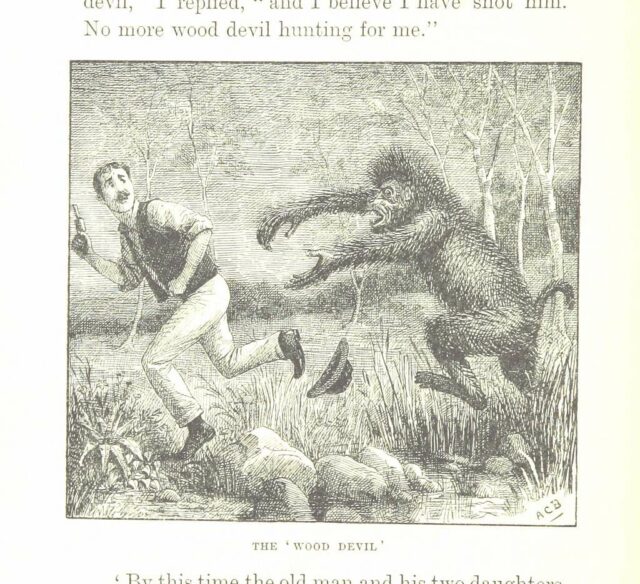
Key Sightings Through Time
Some Yowie stories stick out, refusing to fade. In 1842, an Aboriginal tracker near Bathurst described a “Yahoo” with long arms. Its feet pointed backward, which gives me chills.
By 1928, Palen Creek near Woodenbong became Yowie central. A farmer claimed a furry giant stole his chickens at night.
The 1970s brought more tales, like Thelma Crewe’s 1976 sighting in Woodenbong. She saw a hulking figure in her yard under moonlight.
Another report from 1977 near Kempsey mentioned a Yowie roaring at campers. Witnesses swore it stood nine feet tall. Stories like that keep me questioning.
The Legend Grows Modern
Yowie fever exploded in the late 20th century. Cryptozoologist Rex Gilroy pushed the creature into the spotlight, claiming thousands of sightings. He called Yowies ancient survivors, maybe Gigantopithecus.
Books like The Yowie by Tony Healy in 2006 cataloged eerie encounters. They mapped hotspots like the Blue Mountains and Queensland’s jungles. I read those pages, but doubt lingers.
Today, locals embrace the myth, from Woodenbong’s “Yowie Country” signs to spooky tours. It feels more like folklore than fact to me. Still, each new story pulls me in.
The internet keeps the legend alive with blurry videos and wild claims but so far, no one has produced irrefutable proof.
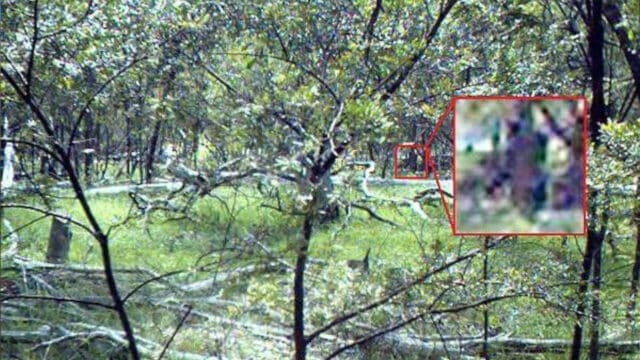
Modern Fascination and Cryptozoology
Yowie stories keep popping up, pulling us into the mystery. In 2019, a Queensland truck driver swore a tall, hairy figure punched his rig. That tale from the Gold Coast hinterland gives me chills.
Just two years later, in 2021, workers near Cairns heard a loud roar. They spotted a dark, hulking shape in the trees. It’s hard not to wonder what they saw.
The Blue Mountains and Woodenbong still buzz with reports. Locals describe heavy footsteps echoing at night. Each story feels alive, even if proof stays tricky.
Yowie Hunters
Some folks dedicate their lives to chasing Yowies. Dean Harrison, from Australian Yowie Research, tracks tales across the bush. His stories of close encounters spark my imagination.
Another searcher, Gary Opit, studies wildlife and Yowie claims. He’s heard eerie calls in Queensland’s jungles, unlike any known animal. I’m drawn to their passion for answers.
These hunters use cameras and heat sensors to find clues. They’ve collected footprints, but nothing crystal clear. Their work keeps the Yowie hunt thrilling.
Yowie in Pop Culture
The Yowie’s crept into Australia’s stories and screens. Back in 1987, a game called Terror Australis featured Yowies as creepy foes. That kind of fame makes me smile.
TV got in on it, too, with a 1988 A Country Practice episode about a Yowie sighting. It spooked viewers, blending myth with everyday life. The creature feels close, somehow.
Even Tim the Yowie Man, a paranormal writer, celebrates the legend. He fought Cadbury in 2004 to keep his name. That spirit shows how Yowies capture hearts.
Theories About Yowies
What could Yowies be, if they’re out there? Some say they’re ancient apes, like Gigantopithecus, surviving in hidden valleys. That idea pulls me in, though fossils are scarce.
Others think Yowies might be marsupials, tied to extinct creatures like Hulitherium. Their size and strength fit the stories, sort of. It’s a stretch, but fascinating.
Then there’s the thought they’re just myths, shared across cultures. I lean toward something real, maybe, but evidence is thin. Still, the mystery keeps me hooked.
Why the Yowie Endures
Yowie stories carry a weight that keeps them alive. Aboriginal communities see them as ties to ancient lands and spirits. That deep root pulls me in every time.
These tales aren’t just old lore for telling at night. They speak of nature’s power, warning us to respect the wild. I feel their strength, even without hard proof.
Some say Yowies guard sacred places, like elders watching over us. That idea lingers in my mind. It makes the bush seem alive with secrets.
Thriving in Today’s World
The Yowie still haunts our thoughts, even in modern times. People love mysteries that science can’t fully explain yet. Each new story lights a spark in me.
From Queensland’s jungles to city campfire chats, Yowies fuel wonder. Towns like Woodenbong celebrate them with signs and spooky tales. It’s hard not to get caught up.
Social media spreads blurry clips and wild claims fast. They don’t prove much, but they keep us curious. I’m hooked on what might be out there.
ParaRational’s Search for Truth
At ParaRational.com, we chase the unknown with open minds. Yowie stories, with their eerie tracks and old legends, fit right in. They make me want to explore more.
We weigh every tale, from creepy sightings to tribal lore. No clear evidence has turned up yet, but that’s okay. The mystery itself is worth the hunt.
Join us to share your thoughts or dig into other cryptids. The Yowie’s puzzle keeps us guessing. What secrets do you think the bush holds?
The Yowie’s Lasting Shadow
The Yowie lingers in Australia’s wild heart, a puzzle that won’t fade. From Aboriginal tales to modern sightings, it bridges the ancient past and curious present. Its hairy shape still haunts my thoughts.
No clear tracks or bones have settled the question yet. But that mystery fuels our wonder, pulling us to the bush’s edge. I keep listening for strange sounds at night.
ParaRational.com loves chasing these eerie unknowns, and the Yowie fits right in. Share your own stories or dive into our cryptid tales. What’s hiding out there, waiting to be found?

